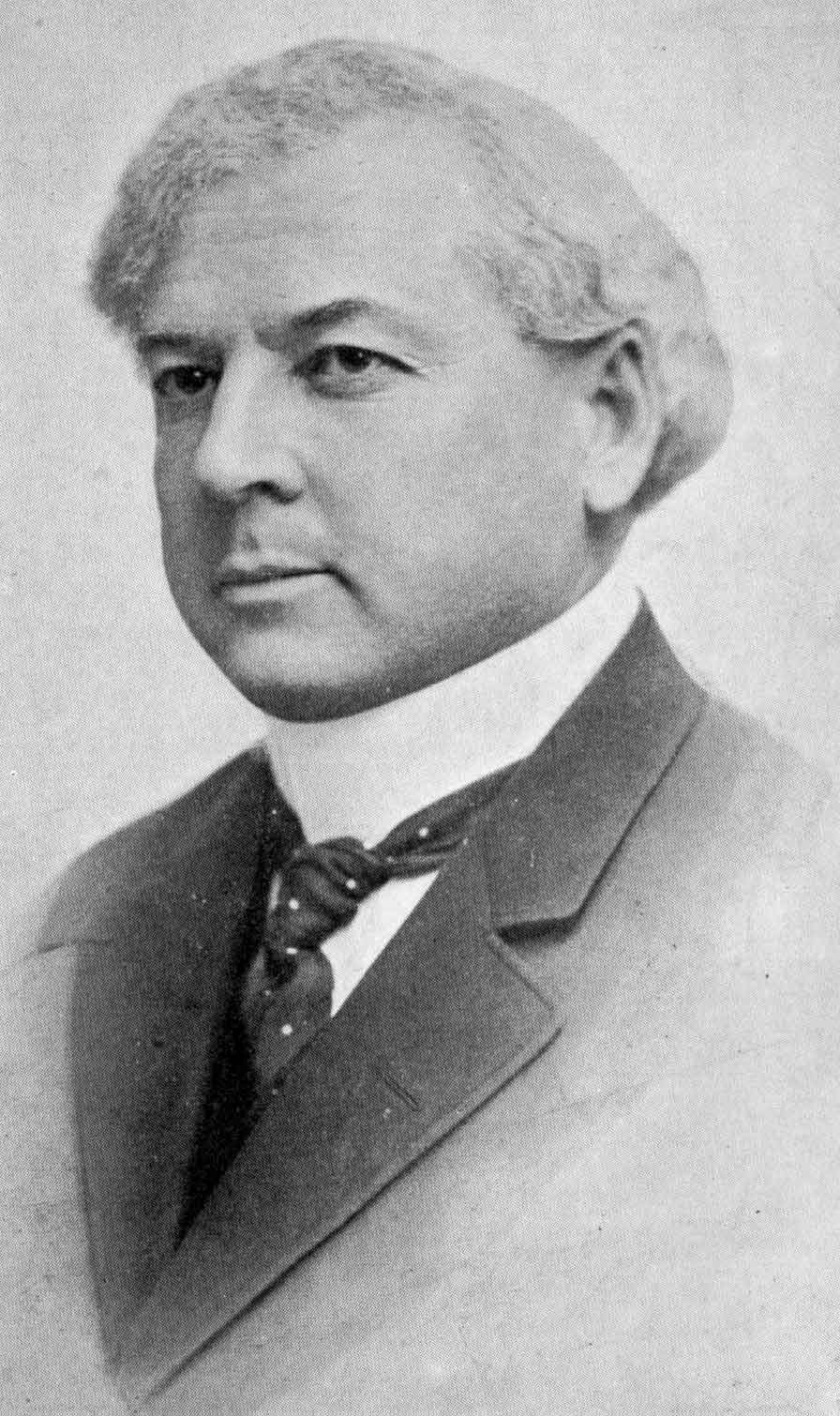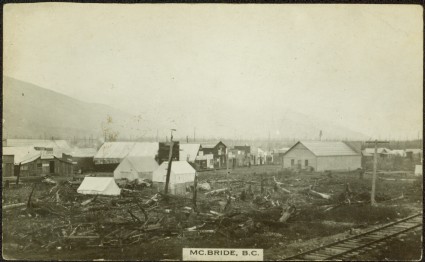On Fraser River 140 km west of Yellowhead Pass
53.3042 N 120.1639 W — Map 093H08 — Google — GeoHack
Earliest known reference to this name is 1911 (GTP map)
Name officially adopted in 1965
Official in BC – Canada
Mile 63 in Tete Jaune Subdivision (Red Pass to McBride as of 1977)
Mile 0 in Fraser Subdivision (McBride to Prince George as of 1977)
Grand Trunk Pacific Railway station built in 1913. Rebuilt in 1919
Grand Trunk Pacific Railway map [ca. 1912]
Grand Trunk Pacific Railway timetable 1914
Grand Trunk Pacific Railway map ca. 1918
Grand Trunk Pacific Railway map 1919
Canadian National Railway map 1925
Grand Trunk Pacific Railway stations

Sir Richard McBride
Wikipedia

McBride in 1914
Northern British Columbia Archives
“The first townsite laid out on the Grand Trunk Pacific Railway in this district is McBride (Mile 90), which will be a divisional point. Yards have been laid out here on a large scale and the construction of shops and a roundhouse is well under way. The town which will arise here will probably contain the first post-office, and being in the heart of the best agricultural land will no doubt become a general centre.” — Morkill, South fork of the Fraser, 1913
In 1910, when Louie Knutson first came through what is now the village of McBride, it was known as the Flats. In 1911 surveyors chose as a townsite and divisional point Mile 90, where the valley opened up into a wide flat area with an ample water supply. They named the new town after the premier of British Columbia, Richard McBride (1870-1917).
The McBride post office opened in February 1914.
Richard McBride’s government chartered a new railway, the Grand Trunk Pacific, but the government did not initially grant a subsidy. Later it did make certain grants which lead to cries of corruption and a demand for investigation. After winning another election in 1907, McBride went off to England, where Lord Grey observed, “I like the look of that picturesque buffalo, McBride.” For his labours on behalf of the province, his ardent support of the Conservative party, his promotion of the imperial connection, his championing of the navy and for the loyal support he gave the federal Prime Minister, Robert Borden recommended to the Governor-General that McBride be invested with the Order of the Knight, Commander of St. Michael and St. George.
McBride’s most famous decision was the acquisition of two Seattle-built submarines in early August 1914, just before American neutrality laws came into effect. “The people’s Dick” beat Uncle Sam to the draw. A few days later the submarines were taken over by the Dominion government.
McBride settled in London, Englnd, where he became agent-general for British Columbia. Health declining, he resigned his post on 20 May 1917, hoping to return to his native province. He died on 6 August 1917, at age 47.
- Morkill, Dalby Brooks [1880–1955]. “Report on Survey on the South Fork of Fraser River from Horse Creek to Beaver River. December 28, 1912.” Report of the Minister of Lands for the Province of British Columbia for the year ending 31st December 1912, (1913):238-240. Google Books
- Walker, James Alexander [1887–1959]. “South fork of Fraser River, vicinity of McBride. November 11, 1914.” Report of the Minister of Lands for the Province of British Columbia for the Year Ending 31st December 1914, (1915). Google Books
- Lower, Joseph Arthur. The Grand Trunk Pacific Railway and British Columbia (thesis). University of British Columbia, 1939. University of British Columbia Library
- Jackman, S. W. Portraits of the premiers: An informal history of British Columbia. Sidney, B.C.: Grey’s Publishing, 1969
- Wheeler, Marilyn [1932–2016]. The Robson Valley Story. McBride, B.C.: Robson Valley Story Group, 1979
- Wikipedia. Richard McBride